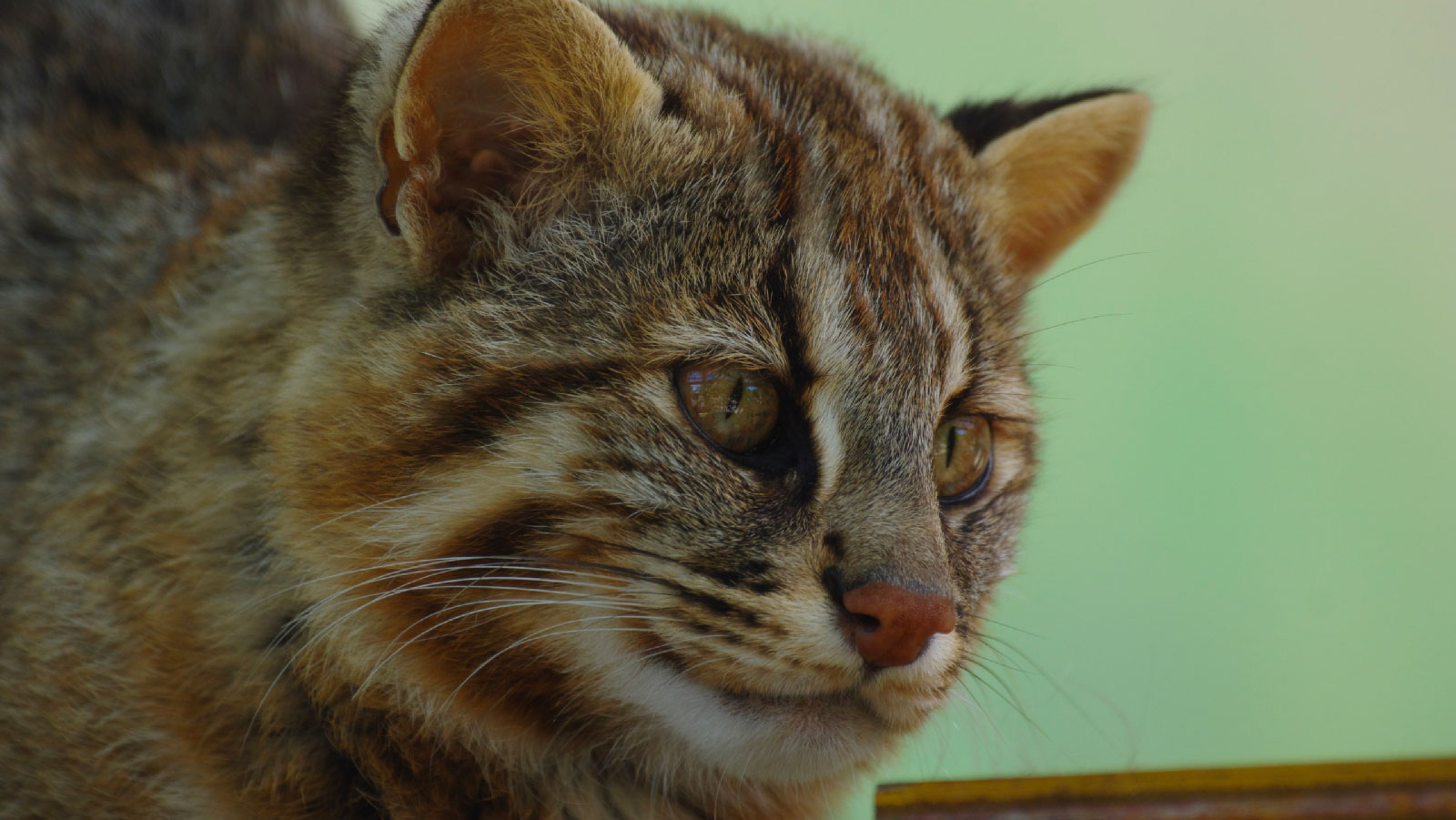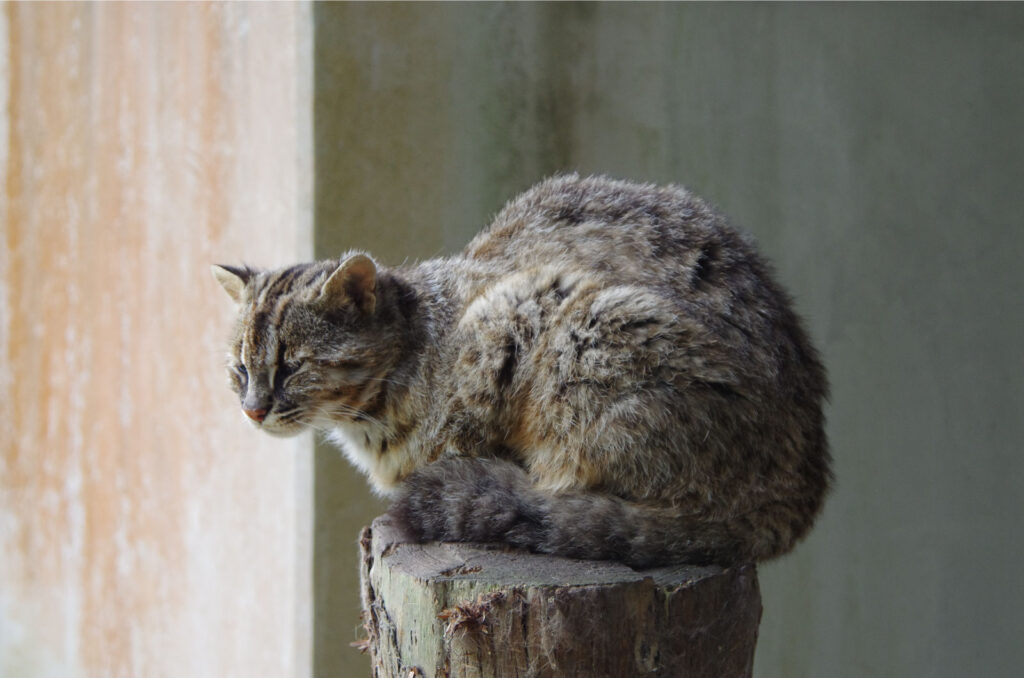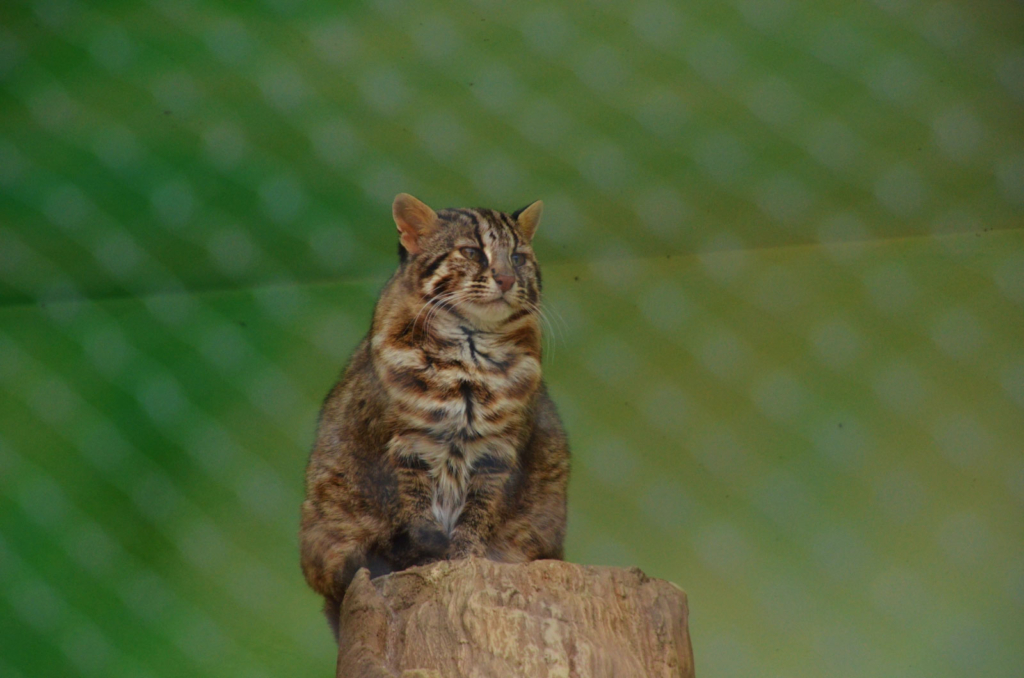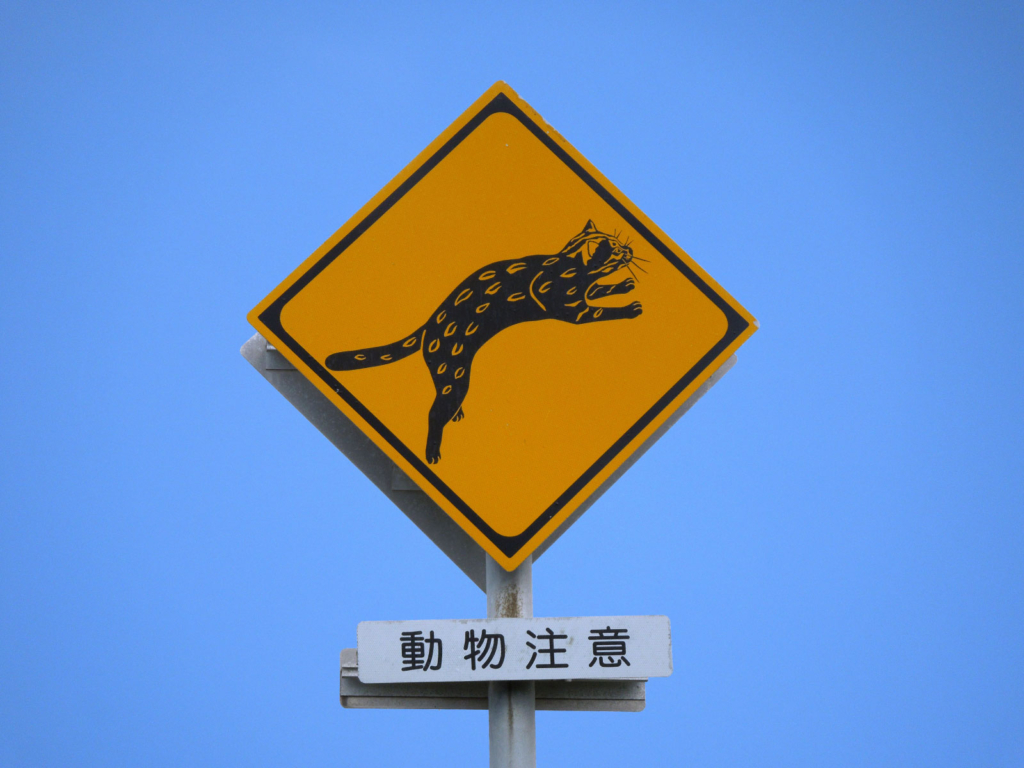Japanese WildCats: the Tsushima Wildcat and the Iriomote Wildcat

The Tsushima cat and the Iriomote cat are both endangered species, and are endemic to Japan. The Tsushima cat, in particular, is not very major in Japan, and few Japanese people know about it. You have to be pretty lucky to see either of them, but you might want to consider going to see them while sightseeing!
Their ancestor is the Bengal wildcat.
There are only two species of wild cats that live in Japan. They are the Tsushima cat living in Tsushima, Nagasaki Prefecture, and the Iriomote cat living in Iriomote Island, Okinawa Prefecture.
Although the exact information is not known, judging from the DNA, it is strongly believed that the ancestor of both is the Bengal wildcat. They came to Japan from the continent, which used to be connected by land, and settled in Tsushima and Iriomote Islands.As their DNA is quite similar, both cats have the characteristics of round ears, white spots behind its ears, the vertical stripes on its forehead, long body, short legs and thick tail.
The Secret to Surviving on a Small Island
What makes these two species unique in the world is that they are both perfect carnivores, even though they live on small islands. Wild small cats in the world eat mice and rabbits. However, since Iriomote Island and Tsushima are small islands, there are few small mammals and it is difficult to catch them. Therefore, by eating various creatures such as lizards, snakes, frogs, crickets, bats, and other small mammals, birds, amphibians, reptiles, insects, etc., they were able to live in the small islands despite being carnivores.
How to see the Tsushima wildcat and the Iriomote wildcat
The Tsushima wildcat

The Tsushima cat is a wild cat that came from the continent 100,000 years ago.
It weighs 3 to 5 kg, is 50 to 60 cm long, and has a tail of about 25 cm. It is characterized by a pattern on its body that is not entirely distinct.
They are found on mountain slopes, in rice fields, near water, and in broad-leaved forests. They are nocturnal and are active from sunset to midnight and dawn.
The number of animals living on the island has decreased to about 80. This is because environmental changes have made it difficult for them to survive. As a result, only half of the island is currently inhabited. They are very cautious, and some people who have lived here for 10 years say they have only seen one once. It seems that the Tsushima cat is quite tough to meet in the wild.
Since it is quite difficult to see them in the wild, there are many zoos and facilities around Japan where the Tsushima cat can be seen.
Kanagawa Prefecture – Yokohama Zoological Gardens Zoorasia
Toyama Prefecture – Fujiyama Family Park
Kyoto Prefecture – Kyoto City Zoo
Aichi Prefecture – Higashiyama Zoo and Botanical Garden
Fukuoka Prefecture – Fukuoka City Zoo
Nagasaki Prefecture – Kujuku Islands Zoo and Botanical Garden
Nagasaki Prefecture – Tsushima Wildlife Conservation Center
Nagasaki Prefecture – Tsushima Wildlife Conservation Center ・Okinawa Prefecture – Okinawa Kodomonokuni
The Tsushima cat may be closed to the public during the breeding season or depending on its health condition, so be sure to check before you go.
the Iriomote wildcat

It is a wild cat that came to Iriomote Island in Okinawa 200,000 years ago, and its existence was discovered in 1965.
It often appears in the wetlands of the island, near rivers, mangrove forests, or around agricultural fields. It weighs 3 to 4 kg, is 5 to 60 cm long, and has a wide nose.
They are nocturnal, and are active at dusk and dawn when there is a little light. 100 or so of them live in the area, and although the chance of seeing one is higher than that of the Tsushima cat, people living in the area may or may not see one once a year. They have a wide range of behavior and are quite difficult to find, and even if you do, they will run away because they are very cautious. It is recommended to wait patiently in the same place.
If you can’t see them, please go to the Iriomote Island Wildlife Conservation Center. Here you can enter for free from 10:00 AM to 4:00 PM. The center protects not only the Iriomote wild cat but also injured animals living in the island, and also displays their skeletons.
There are signs on the road that are unique to the two islands.

The Tsushima cat and the Iriomote cat are endangered species. As time went by and more roads were built on the island, there were many traffic accidents that hit them. For this reason, there are signs in islands warning people to be careful of hitting wild cats.











